The Specialized Turbo Levo is one of the best eMTBs around – after all, it won our E-MOUNTAINBIKE group test 3 years in a row. In the process of the redesign for the third generation of the bike, it’s become significantly more capable on the trail. We were able to test the new € 13,999 Specialized S-Works Levo 2022 intensively already, compared it with its predecessor and can tell you what the new Levo is capable of and who it’s the right bike for.
Contents
- Where, when and how did we test the new Specialized Levo 2022?
- The 10 most important updates of the Specialized S-Works Levo 2022:
- The Specialized S-Works Levo 2022 in detail: frame details and features
- The new Specialized MasterMind display in detail: What can the TCU 2.0 do?
- Motor, assistance modes and Mission Control app in detail
- The components of the Specialized S-Works Levo 2022
- Specialized Levo Pro 2022: This is the spec we would choose
- The geometry of the Specialized S-Works Levo 2022 with numerous adjustment options and S-Sizing
- Sizing recommendation for the Specialized Levo 2022 S-Sizing
- Exclusive review of the new Specialized S-Works Levo 2022: This is how it rides on the flats and uphill
- Specialized Turbo Levo S-Works old vs new
- Who should ride the old Levo? Who should buy the new Levo?
- Specialized S-Works Turbo Levo 2022 conclusion
Before we get into the review of the new Specialized Turbo Levo 2022, we want to direct you towards our latest release, issue #024, available in our magazine app. Our digital app isn’t just the best way to enjoy our content but is also packed full of cool stories, know-how and our mega group test with 25 of the most exciting bikes of 2021. You can find out whether the new Specialized S-Works Turbo Levo was able to assert itself over 24 other bikes in the search for the best eMTB of 2021 and continue the success of its predecessors. The app magazine is completely free and you can find our latest release here.
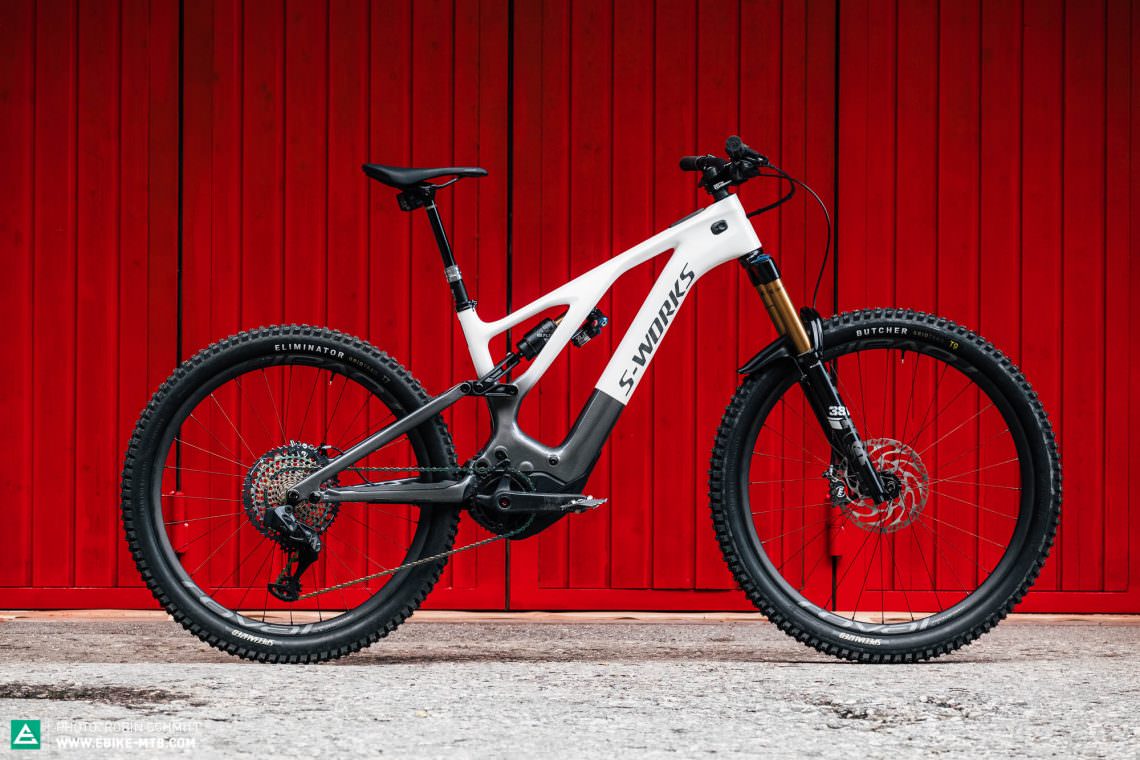
22.04 kg (size S4) | € 13,999 | Manufacturer’s website
For a long time, the Specialized Levo has been seen as a pioneer in terms of integration and connectivity. It’s also well known for its great all-round characteristics, a broad range of applications and its excellent character on long tours. At first glance not much has changed visually on the new Specialized S-Works Levo 2022, but look closer and you’ll see that the full carbon frame with its 150 mm travel has been completely reworked. That doesn’t just see Specialized move to a progressively sporty and customisable geometry and mixed wheel sizes with a 29″ front and 27.5″ rear wheel. The component spec consisting of a FOX 38 fork with 160 mm travel and a piggyback shock are also fully conceived for trail performance. Considering the large 700 Wh battery, the weight of 22.04 kg for the size S4 bike continues to be on the light side. While reworking the €13,999 Specialized S-Works Turbo Levo, the Californian brand also paid attention to the small details, updating the motor software, kinematics, software, charging port, tuning options, several frame details and the ecosystem of motor and connectivity features, as well as the Turbo Connect Unit itself. The newly integrated MasterMind display in the top tube replaces the existing TCU and is one of the most noticeable updates, drawing curious looks.

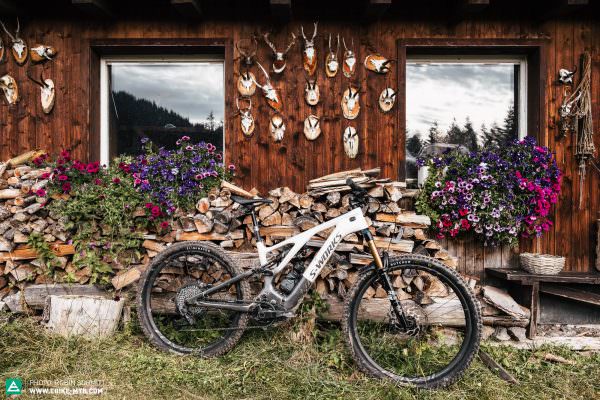
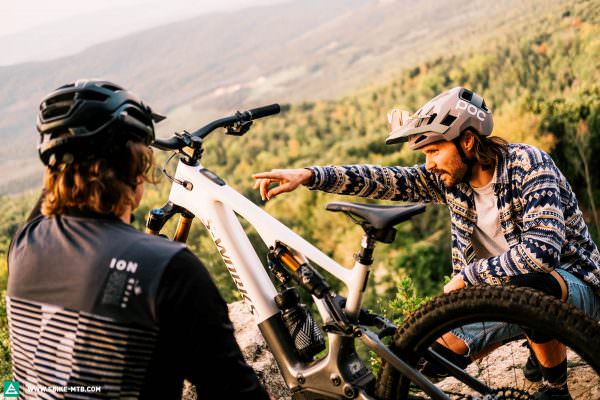
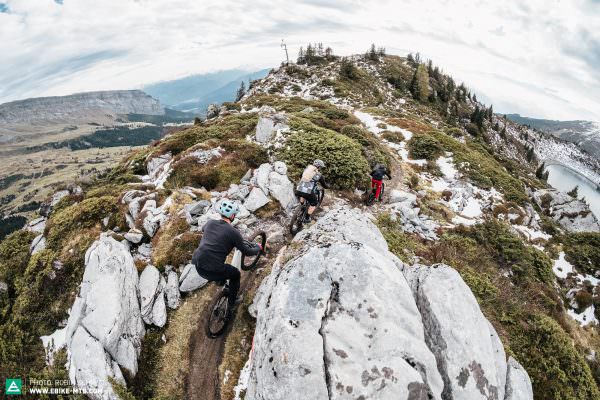
Where, when and how did we test the new Specialized Levo 2022?
We were able to test the Levo exclusively and intensively across a diverse mix of terrain with a total of 14 different riders from beginners to experts. We sussed out the new Levo on a variety of terrain in the Alps, Tuscany, our home trails in Stuttgart and several of the best bike spots in Germany like the Pfalz. Interestingly, none of the bikers we met on the trails recognised the new Levo as such out on the trails. Of course, nor did we let them look that closely.
The 10 most important updates of the Specialized S-Works Levo 2022:
- Completely redesigned frame with progressive, customisable geometry concept.
- Specialized 2.2 motor: still based on the Brose Drive S-Mag motor but with special motor software, hardware and an updated drive belt. In the past several problems were reported. These should now be solved.
- For the first time, the Levo has a fixed and integrated display: the so-called MasterMind is an evolution of the TCU and also integrated into the top tube.
- Lots of lovingly considered details: frame protection at the rear, exemplary integration of magnet and speed sensor, impact protection for the seatpost.
- Capable suspension with FOX 38 fork and X2 shock.
- New charging port cover has multiple levels of sealing and declares war on water – that will be of particular interest to Levo fans from the UK and other parts of the world that have autumn and winter for more than 11 months of the year.
- MicroTune: the new mode lets you adjust the motor assistance in 10% steps and works in parallel to the existing three-tier system of ECO, TRAIL and TURBO mode.
- S-Sizing system: the new Levo comes in six frame sizes, S1–S6 and, thanks to the short seat tube, lets you choose between 2 or 3 sizes. That should let your preferred riding style rather than your height decide over the frame size you go with. Sizes should suit everyone between 1.49 and 1.98 m tall.
- Not new but important, because few eMTBs are capable of this: the new Levo is completely quiet downhill!
- All these new features and clever solutions also cost a little more: € 13,999.
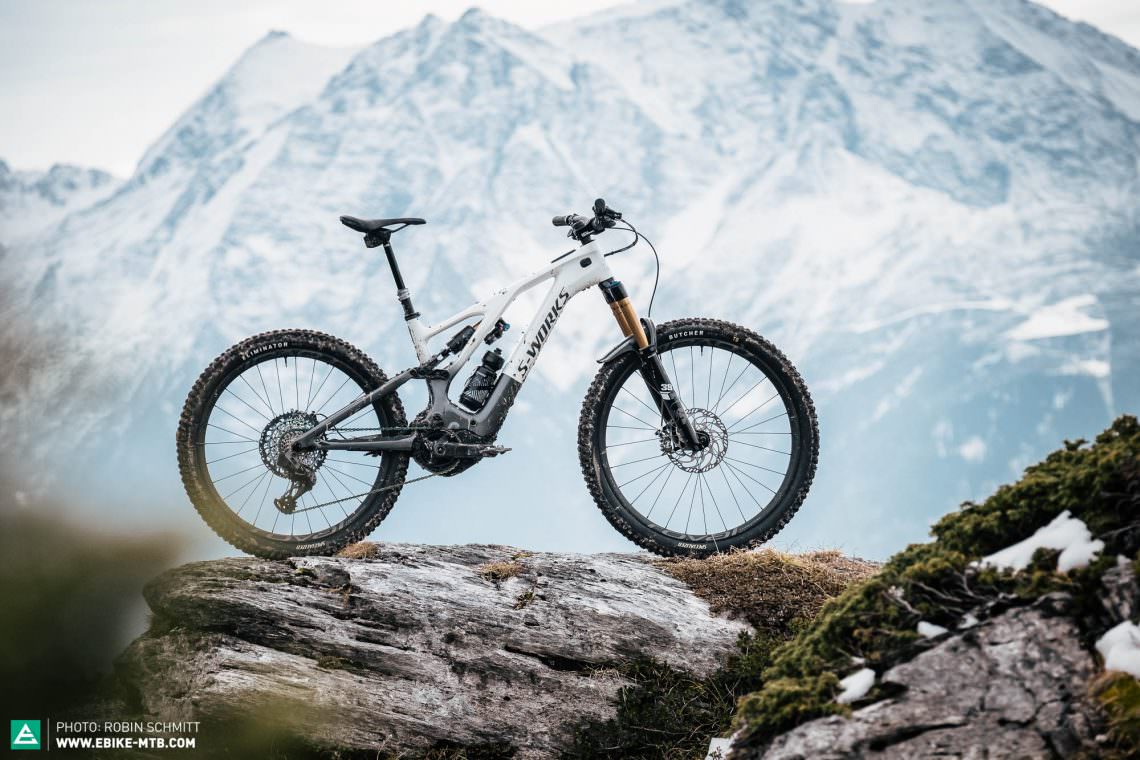
The Specialized S-Works Levo 2022 in detail: frame details and features
The proportions of the Levo are harmonious and the motor system built up around the Specialized 2.2 motor is integrated flawlessly. With the motor in its rotated position, there’s enough space for the 700 Wh battery to be positioned low in the frame. That means the bike benefits from good weight distribution despite the large battery. However, to remove the battery the whole bike has to be turned on its head.



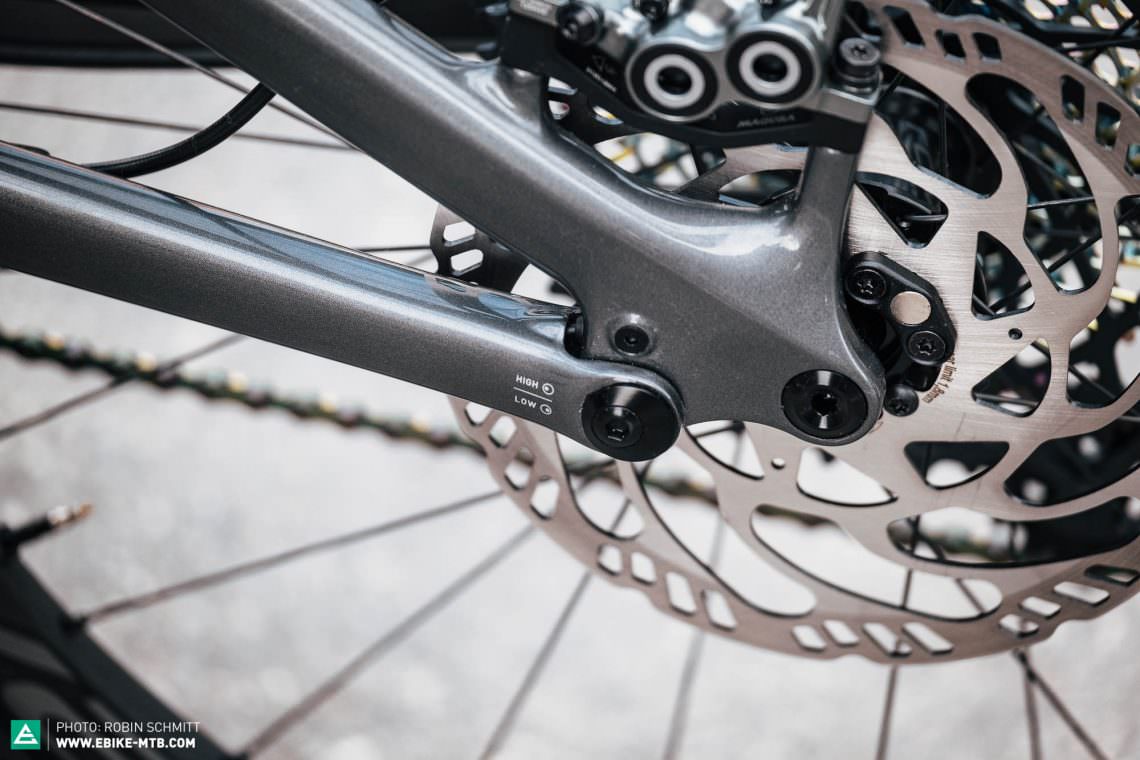
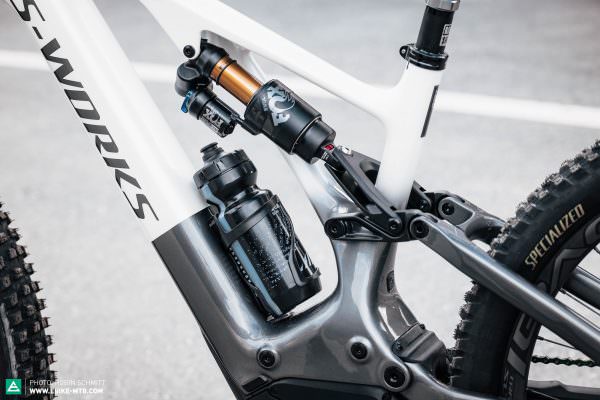

Problems with water ingress have long been a thorn in the side of the Specialized Levo. As such, war has been declared against water ingress and wet connections. The new charging port came into being as an elaborate in-house design with lots of attention to detail. Triple sealing means it should be completely water and weatherproof. The cable between the motor and charging port as well as the cover have been completely updated. Regardless of where you look, numerous new considered details can be spotted all over the Levo: the seat tube has received impact protection to shield the motor and the speed magnet is a paragon of integration into the disc rotor, while the speed sensor is completely hidden inside the carbon frame. The usual SWAT multi-tool in the steerer tube is of course present here too. In addition, there’s protection on the frame at the rear for the main pivot bearings to prevent premature wear from dirt. The wavy and soft chainstay protector makes its contribution to the silence of the Levo. There’s still space for a water bottle in the main triangle despite the piggyback shock.
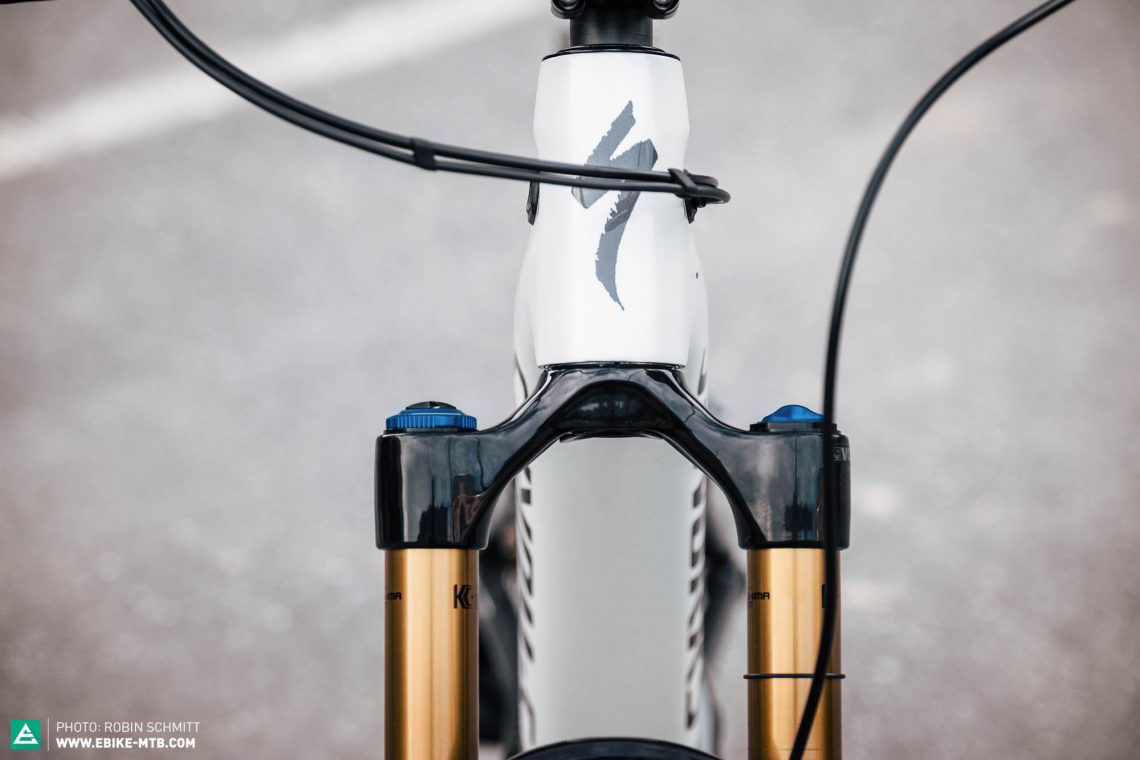
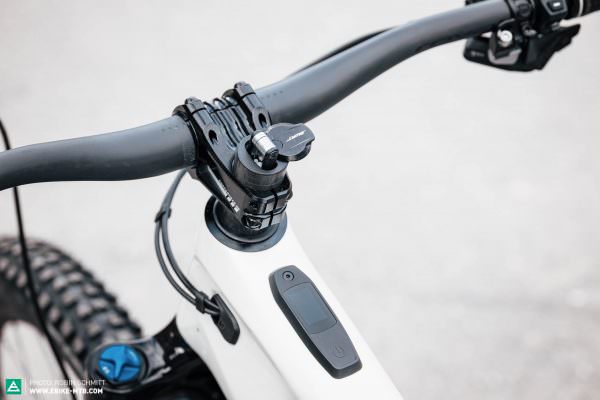


The new Specialized MasterMind display in detail: What can the TCU 2.0 do?
Specialized have updated the Turbo Connect Unit (TCU) and given the brain controlling the digital ecosystem around the motor and battery a fixed display in the top tube. The MasterMind is the new brain and more than just a display. Alongside battery charge, speed, time, distance covered, total ascent, power and remaining range, it can show many other pieces of data.
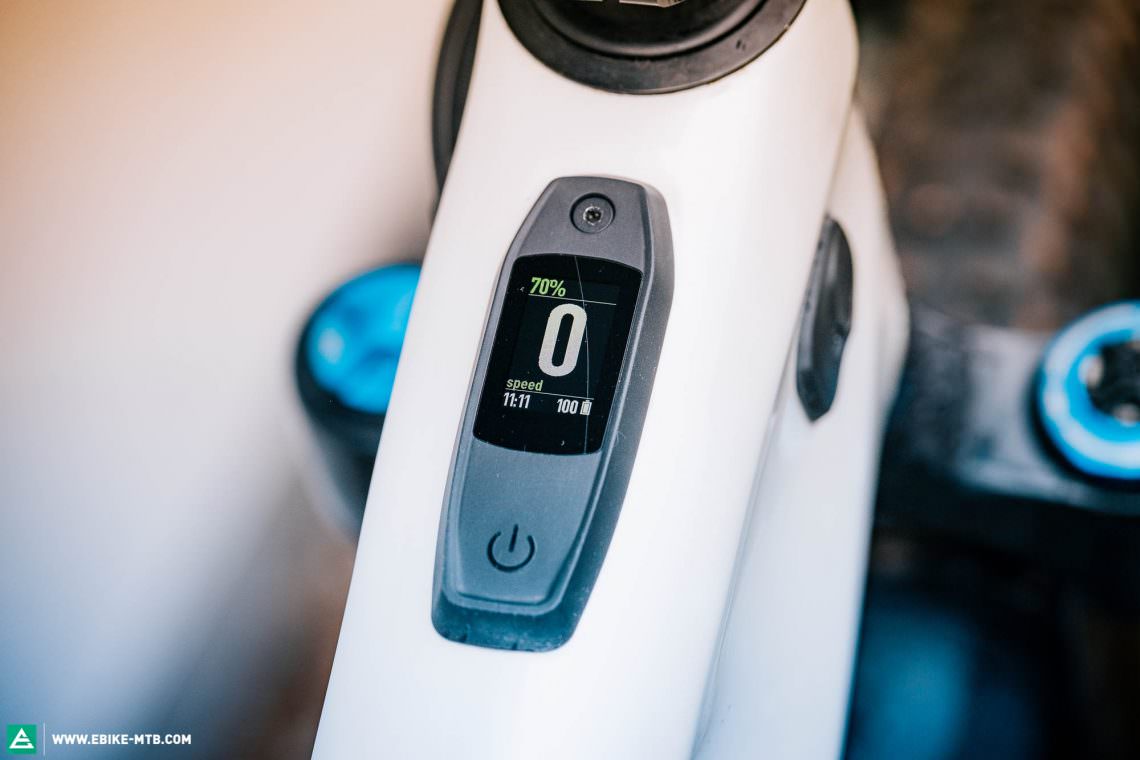
What you want to see is up to you. When choosing the data fields displayed, you have 4 different layout options with 1, 2 or 3 data fields on show, the setup of which you can control with the Mission Control app. Specialized decided against a touch screen due to the display’s small size. You can choose between different data fields with the button on the remote. Despite the “scratch-proof” Gorilla Glass, the MasterMind unit on our test bike already has the first battle scars.

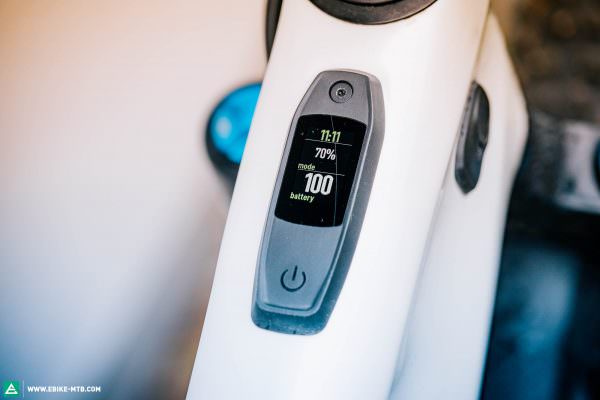

Motor, assistance modes and Mission Control app in detail
The Specialized motor, which is based on the Brose Drive S-Mag, has been tuned both in terms of hard- and software, which is why it has received a new number: 2.2. The changes, including an updated drive belt, are supposed to increase durability significantly. That’s claimed to consign known problems with the reliability of the Specialized 2.1 motor to the past. Like its predecessor, the Specialized 2.2 motor also produces 90 Nm torque and has a powerful and forceful character. Specialized have come up with a brilliant software tune, meaning the Brose Drive S Mag handles naturally and intuitively despite its power. The assistance modes continue to offer the choice of ECO, Trail and BOOST. We’re particular fans of the progressive TRAIL mode.
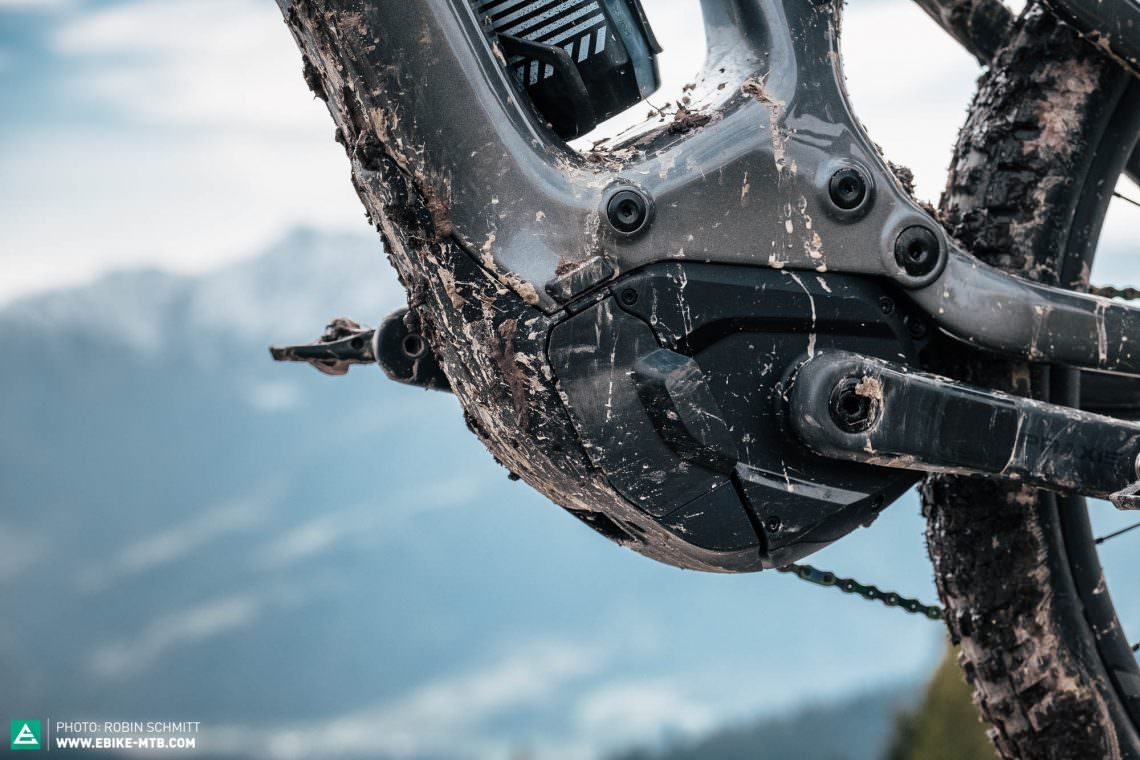
An exciting update is the MicroTune function: this allows assistance modes to be fine-tuned on the trail. By long-pressing the plus button on the motor remote, you can enter the parallel settings that exist alongside ECO, TRAIL and BOOST modes, letting you adjust the assistance in 10% steps while riding.

Like every one of Specialized’s eMTBs, the assistance modes can be adjusted in terms of their acceleration response, support and peak power to suit your preferences via the Mission Control app. Aside from the remote, assistance modes can also be controlled by your heart rate providing an exciting option for anyone who wants to pursue targeted training or wants to maintain a target heart rate while riding. If you’re looking for even more connectivity or features, you should look at the Specialized Ride app with which routes and social rides can be planned, organised and displayed.
We’re sure that Specialized will expand the functionality of the digital ecosystem in the future with over the air updates, meaning you’ll buy a bike today that will be capable of even more in the future.
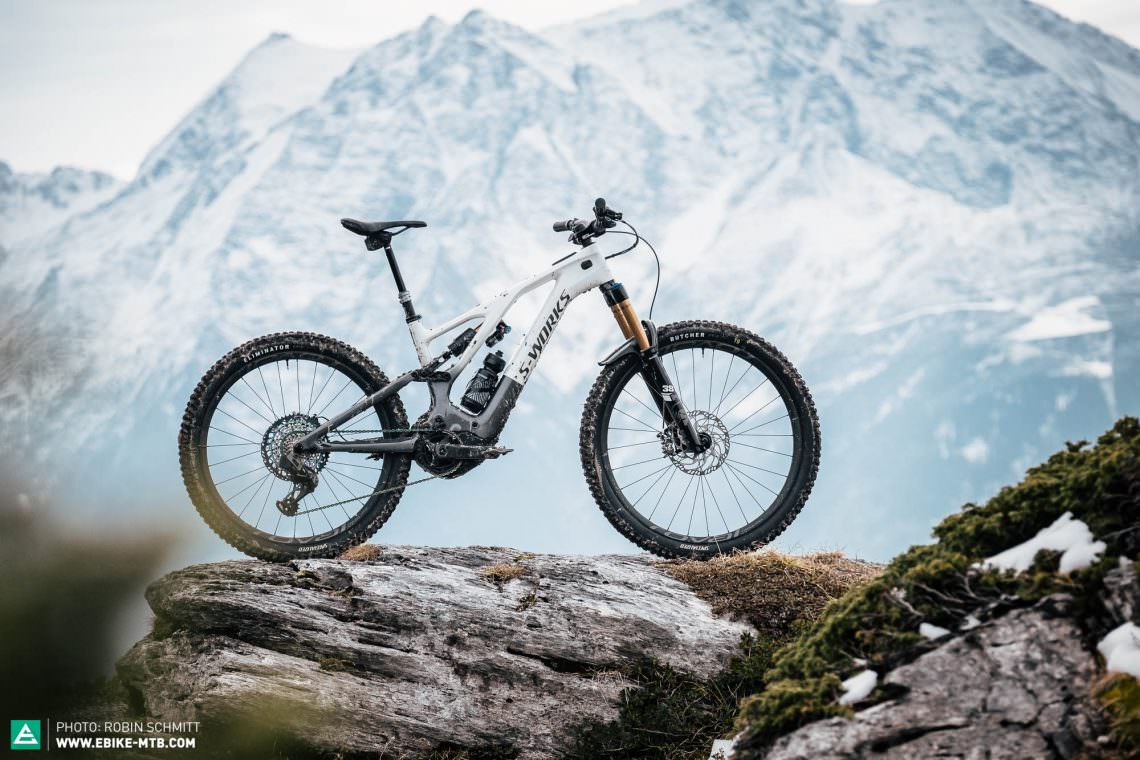
The components of the Specialized S-Works Levo 2022
The Specialized S-Works Levo 2022 isn’t tuned for low weight but trail performance. Nonetheless, the 22.04 kg weight of size S4 is on the lighter side. The 160/150 mm suspension consists of a FOX 38 fork with the GRIP2 damper up front and a FLOAT X2 shock at the rear. For the S-Works model, Specialized rely on SRAM AXS wireless components, with a SRAM XX1 Eagle drivetrain and RockShox Reverb dropper ensuring a tidy cockpit. MAGURA MT7 brakes with 200 mm rotors front and rear do the stopping. Unfortunately, the adjustability of the MAGURA Shiftmix clamps to which the AXS trigger for the drivetrain and dropper remote are mounted is very limited. That means the brake levers and triggers are impossible to adjust to the perfect position simultaneously. For ergonomic reasons, we’d prefer to see classic, separate clamps for the brakes and triggers. The RockShox Reverb dropper post has 170 mm travel in size S4. However, that’s also the maximum, with the larger S5 and S6 models coming with the same dropper stroke.
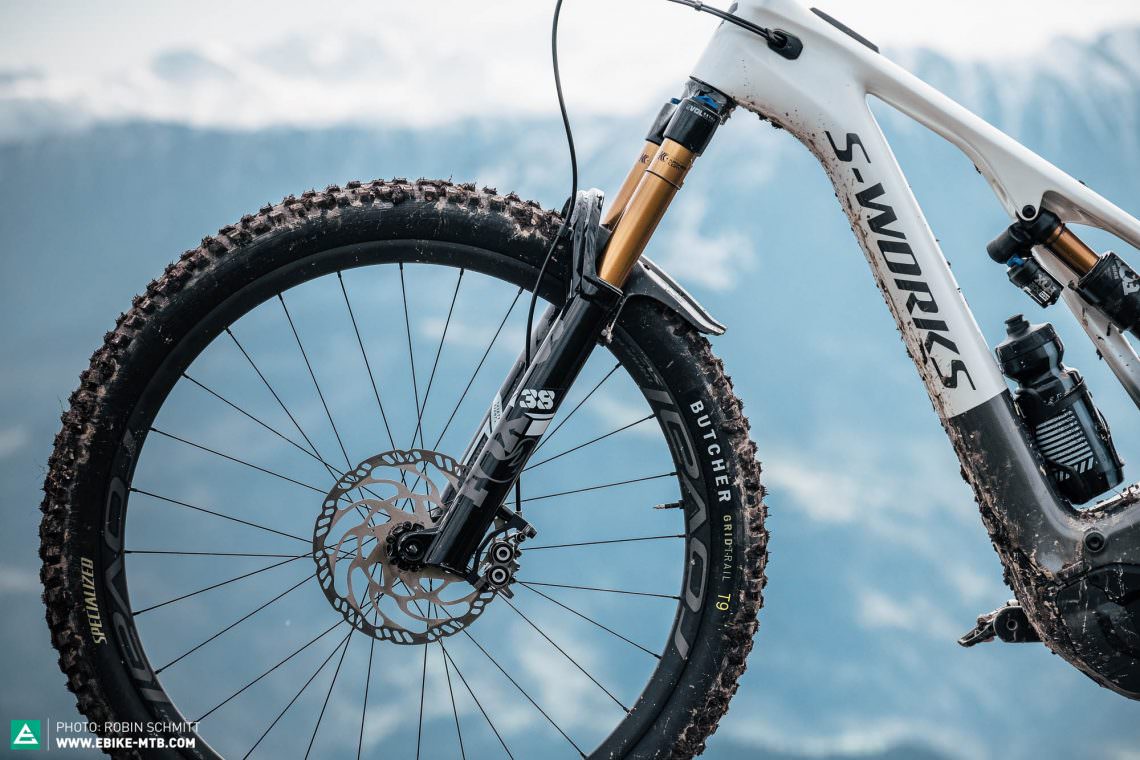

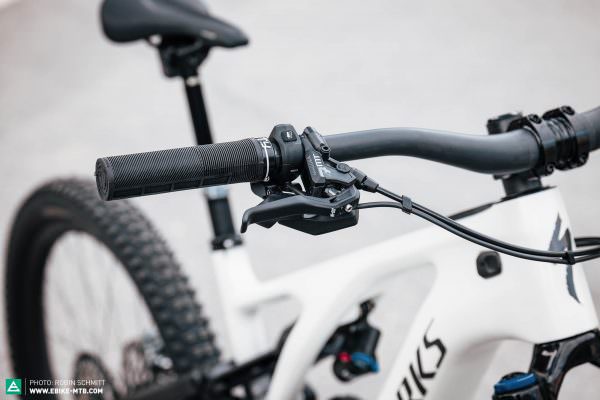

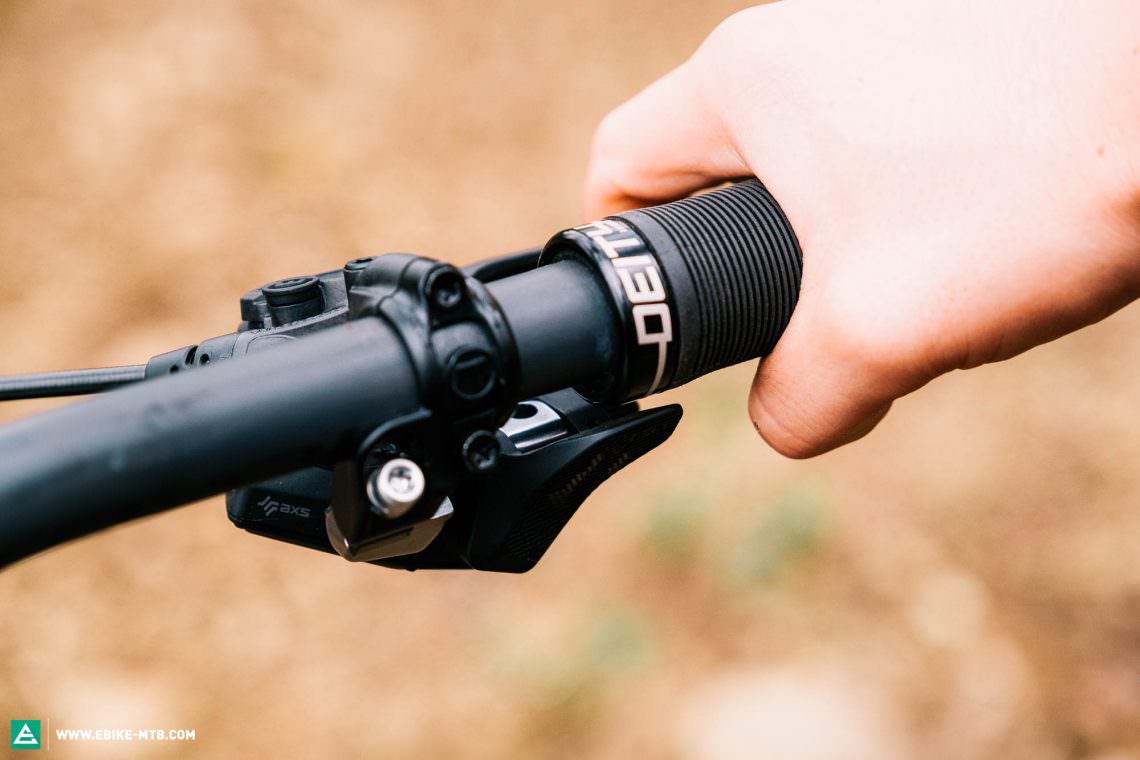
The Roval Traverse SL carbon wheels, pairing a 29″ front and 27.5″ rear wheel, are shod in Specialized’s own 2.6″ Butcher tires in the T9 compound up front and a 2.6″ Eliminator at the rear with the harder-wearing T7 rubber. Unfortunately, they both come in the puncture-prone GRID Trail casing, not doing justice to the potential of the bike. Particularly heavy riders and anyone who wants to protect their carbon wheelset will likely want to run plenty of pressure, eliminating the advantage of the 2.6″ wide tires. If you want to make full use of the potential of the bike and protect the carbon rims too, you should put on more robust tires, for example, Specialized’s GRID Gravity casing.
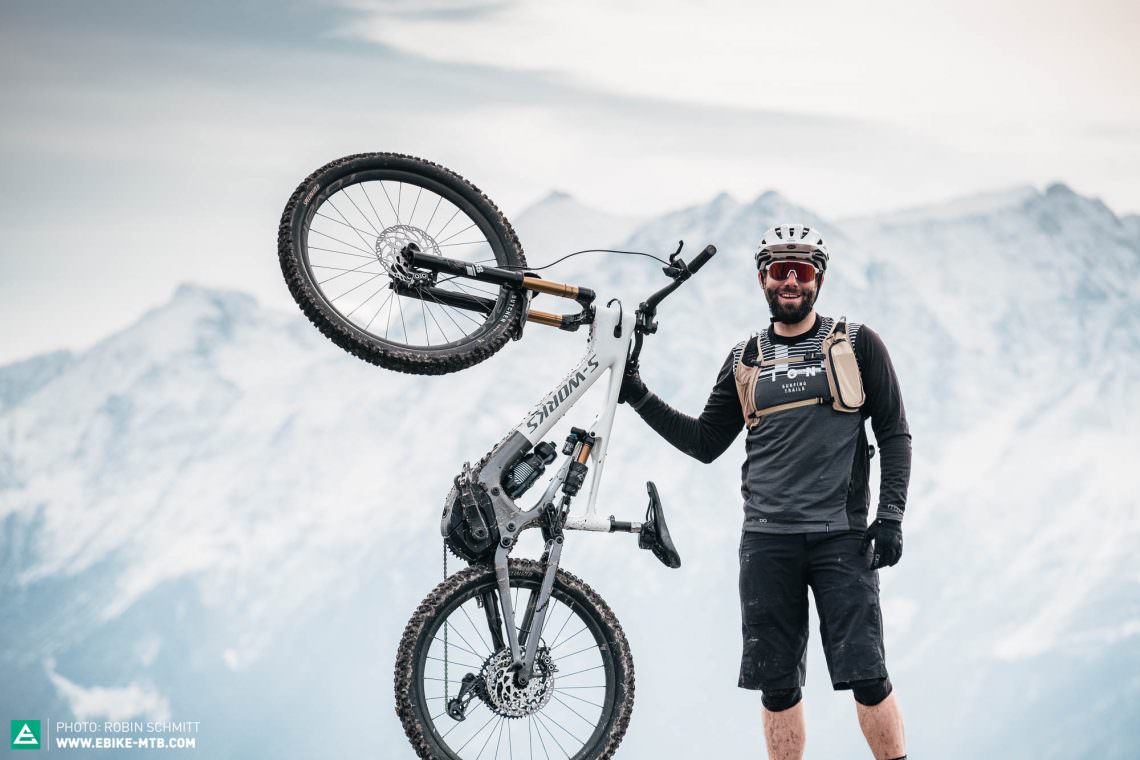
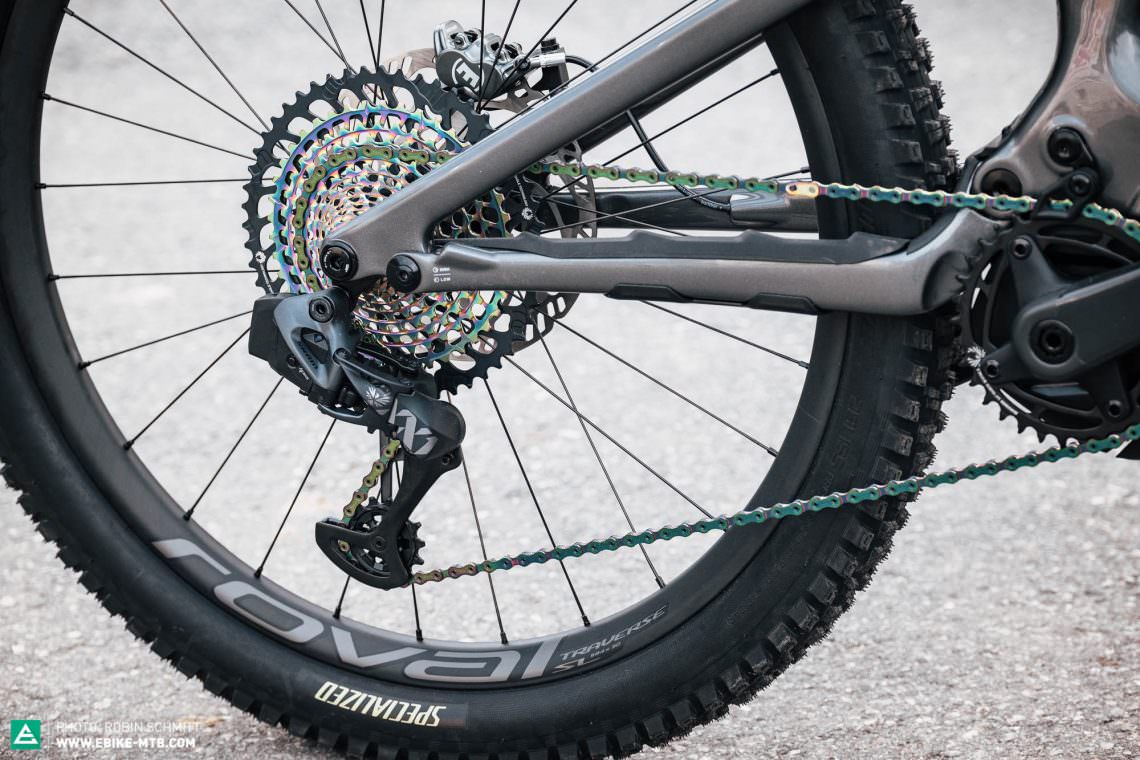
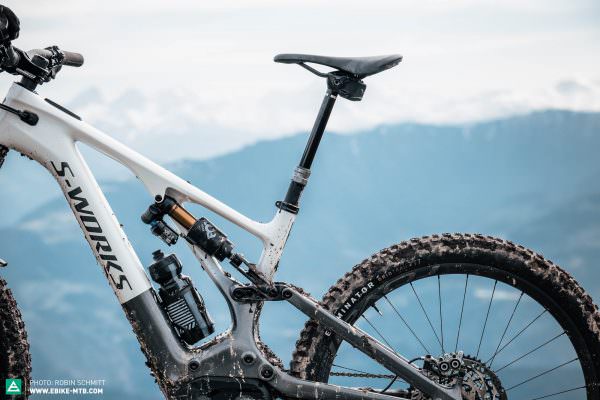
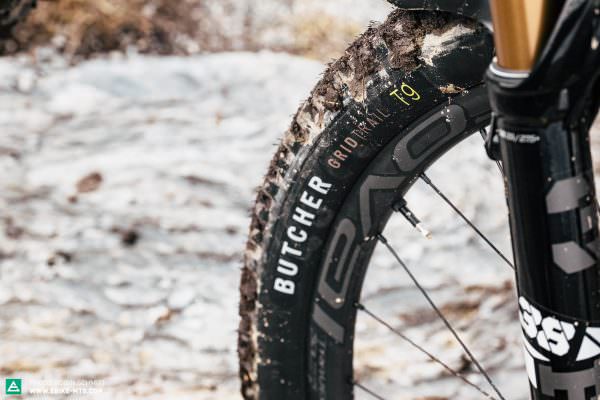
Specialized S-Works Turbo Levo
€ 13,999
Specifications
Motor Specialized 2.2 90 Nm
Battery Specialized M3 700 Wh
Display Specialized Mastermind
Fork FOX 38 Factory GRIP2 160 mm
Rear Shock FOX X2 Factory 150 mm
Seatpost RockShox Reverb AXS 100-170 mm
Brakes MAGURA MT7 200/200 mm
Drivetrain SRAM XX1 Eagle AXS 1x12
Stem Deity Copperhead 50 mm
Handlebar Specialized Trail, FACT Carbon 780 mm
Wheelset Roval Traverse SL 29"/27.5"
Tires Specialized Butcher/Eliminator GRID Trail 2.6"
Technical Data
Size S1–S6
Weight 22.04 kg
Perm. total weight 131 kg
Max. payload (rider/equipment) 109 kg
Trailer approval No
Kickstand mount No
Specific Features
SWAT Multitool
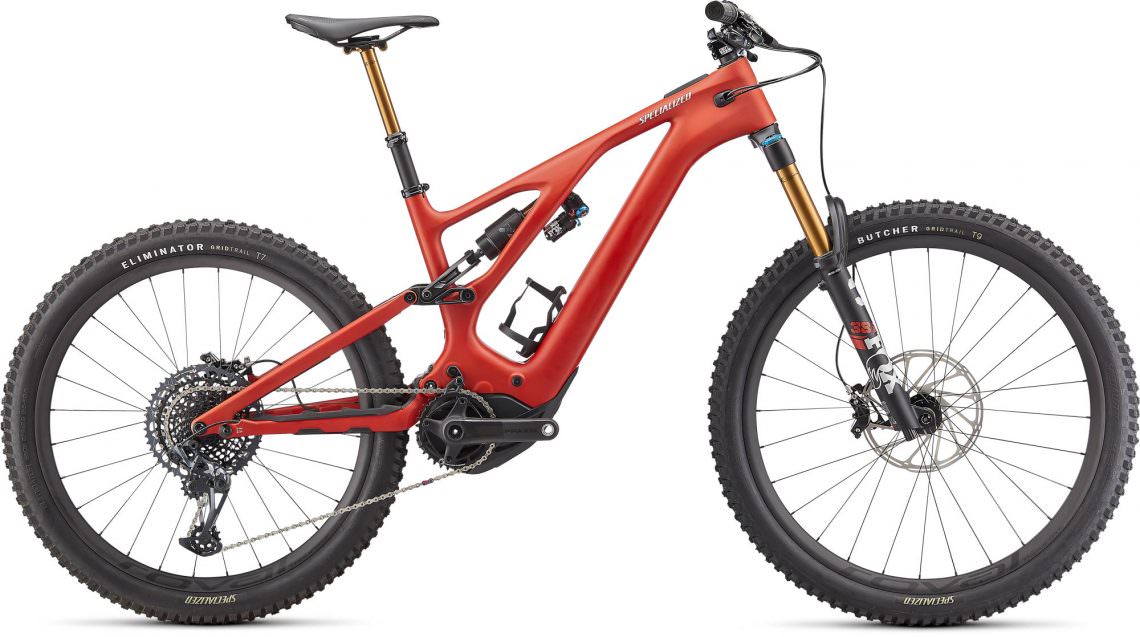
Specialized Levo Pro 2022: This is the spec we would choose
The only other model of the new Levo available to buy now is the Specialized Levo Pro 2022 for € 11,499. A distinctive understatement: the missing Specialized logo on the down tube. The Pro model might not get the wireless components but in terms of the build actually exceeds the S-Works model. The fitted FOX Transfer dropper comes with more travel for sizes S4–S6 than the S-Works, improving freedom of movement for bigger riders. The ergonomic flop of the MAGURA Shiftmix clamps isn’t a problem for the Pro either. Braking is taken care of by established, high-performing SRAM CODE RSC brakes with a large 220 mm rotor in sizes S4–S6 up front and 200 mm at the rear. Super! Big 220 mm rotors for heavy riders make total sense! Unfortunately, you’ll only find them here. For the suspension and tires, there’s no difference to the S-Works model. For the wheels, Specialized fit the slightly more affordable and marginally heavier Roval Traverse carbon wheels, with a 29″ hoop at the front and 27.5″ at the rear.
Specialized Turbo Levo Pro
€ 11,499
Specifications
Motor Specialized 2.2 90 Nm
Battery Specialized M3 700 Wh
Display Specialized Mastermind
Fork FOX 38 Factory GRIP2 160 mm
Rear Shock FOX X2 Factory 150 mm
Seatpost FOX Transfer 100-200 mm
Brakes SRAM Code RSC 200/200 (S1-S3), 220/200 (S4-S6) mm
Drivetrain SRAM XX1 Eagle 1x12
Stem Deity Copperhead 50 mm
Handlebar Specialized Trail, FACT Carbon 780 mm
Wheelset Roval Traverse 29"/27.5"
Tires Specialized Butcher/Eliminator GRID Trail 2.6"
Technical Data
Size S1–S6
Perm. total weight 131 kg
Max. payload (rider/equipment) 109 kg
Trailer approval No
Kickstand mount No
Specific Features
SWAT Multitool
The geometry of the Specialized S-Works Levo 2022 with numerous adjustment options and S-Sizing
The idea behind S-Sizing, with short seat tubes but suitable insertion depths for seatposts, is as follows: every rider should have multiple, ideally up to three, fitting frame sizes which they can choose from. That means the choice of frame size isn’t dependent on the length of the seat tube but on your riding style and desired riding characteristics. The Specialized Levo is available in six sizes from S1 to S6, which should suit riders between 1.40 and 1.98 m tall. More on that shortly. The Levo also offers multiple options to experiment with the geometry and to adjust it to suit your preferences. Below, you’ll find the numbers for the high position (short setup) of the flip chip, with a nominal head angle of 64.5°, in which the bike is delivered as standard for most sizes.
| Size | S1 | S2 | S3 | S4 | S5 | S6 |
|---|---|---|---|---|---|---|
| Seat tube | 380 mm | 390 mm | 405 mm | 425 mm | 445 mm | 465 mm |
| Head tube | 105 mm | 105 mm | 115 mm | 125 mm | 135 mm | 145 mm |
| Head angle | 64.5° | 64.5° | 64.5° | 64.5° | 64.5° | 64.5° |
| Seat angle | 78° | 77.2° | 76.7° | 76.2° | 76.2° | 76.2° |
| Chainstay | 442 mm | 442 mm | 442 mm | 442 mm | 442 mm | 442 mm |
| BB Drop | 25 mm | 27 mm | 27 mm | 27 mm | 27 mm | 27 mm |
| Wheelbase | 1,179 mm | 1,200 mm | 1,225 mm | 1,255 mm | 1,284 mm | 1,318 mm |
| Reach | 412 mm | 432 mm | 452 mm | 477 mm | 502 mm | 532 mm |
| Stack | 605 mm | 617 mm | 626 mm | 635 mm | 644 mm | 653 mm |
The angleset provided with the bike includes two different headset cups that let you adjust the head angle between 65.5°, 64.5° and 63.5°. To do this, the stem has to be removed and the headset cup swapped out or flipped to change between 63.5° and 65.5°. Highlight: the lower headset cup doesn’t require any changes, while the system is designed so that the top headset cup is automatically aligned.
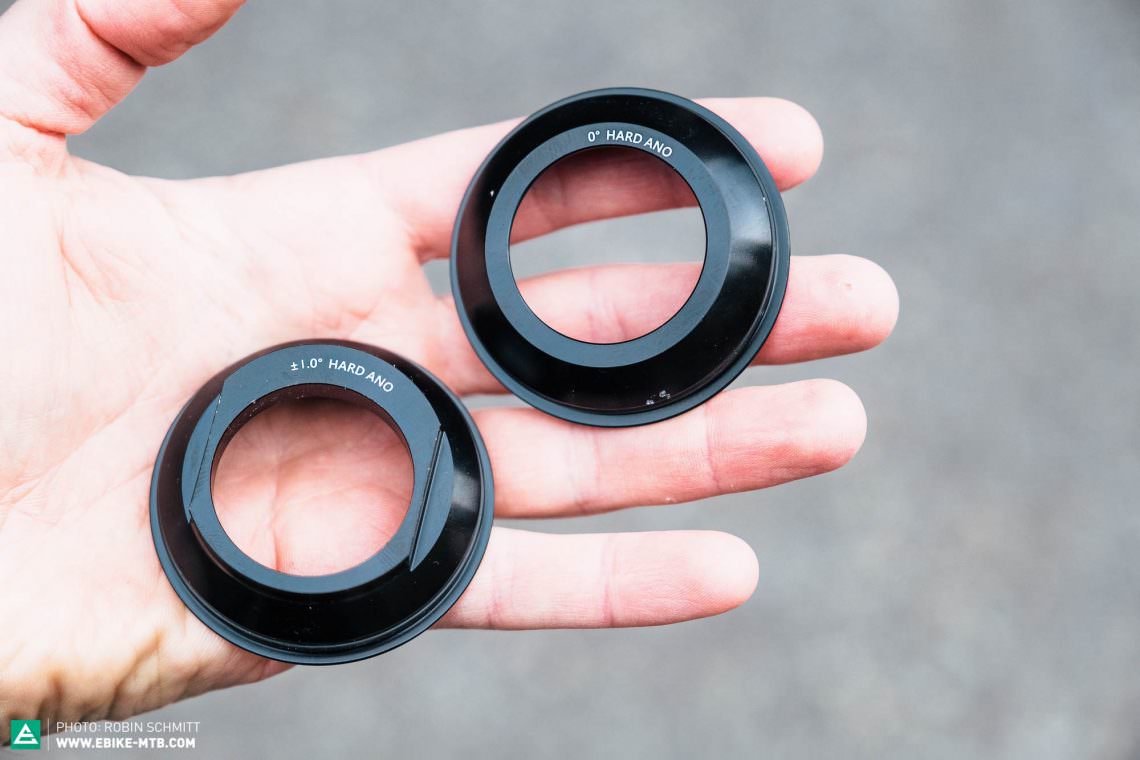
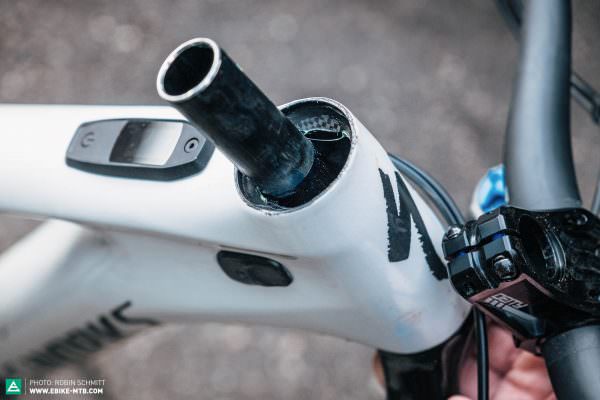

The flip chip at the rear isn’t just well-suited to experimentation but also helps make size-specific changes to the rear end. More important than short chainstays is the balance of the overall geometry. While the Specialized Turbo Levo 2022 chainstay length doesn’t change across different frame sizes like some analogue bikes, it provides enough adjustability to sensibly suit the main triangle. We recommend you ride the S1 to S3 sizes of the Levo in the high position, with short chainstays. That’s how it gets delivered.
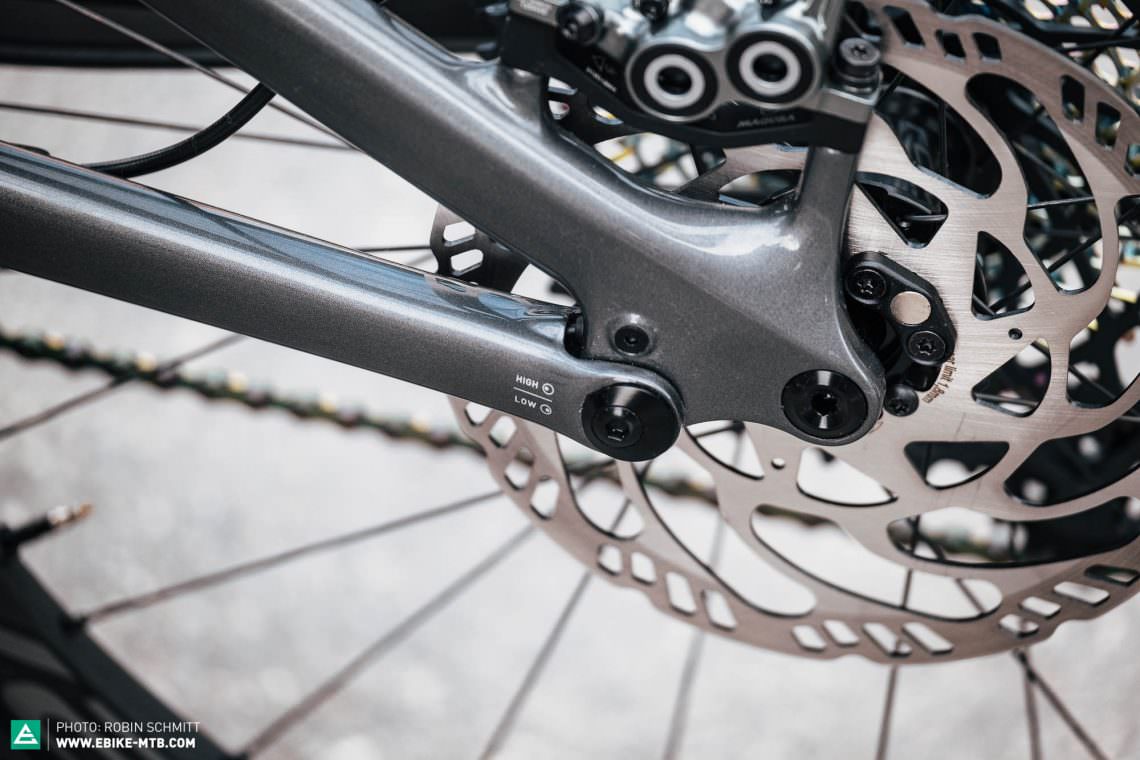
In size S4 it’s all about your preference: the high position amplifies the playful and demanding character of the bike, while the low position ensures good-natured handling with significantly more stability. In frame sizes S5 and S6 we recommend the low position (long setup). Attention: the flip chip doesn't just change the chainstay length but also the bottom bracket drop and angles, with complex effects on the geometry.
Sizing recommendation for the Specialized Levo 2022 S-Sizing
We had the exclusive opportunity to test the new Turbo Levo in sizes S3 and S4 and can tell you just how noticeable the differences are.
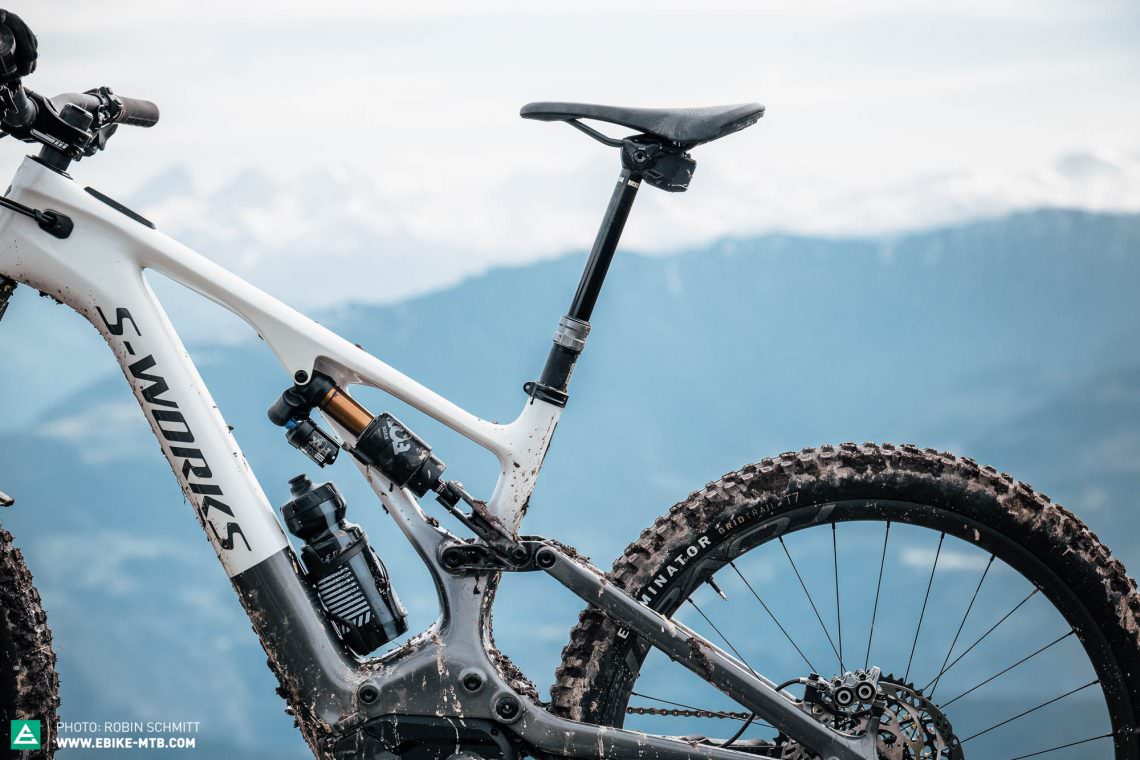
If you’re between two sizes, the larger frame will provide more stability, security at high speed and lots of freedom of movement thanks to the larger reach. However, it demands an active riding style for fast direction changes or on slow, technical sections. You have to work to keep pressure on the front and maintain grip with the front wheel. If you don’t, it becomes much harder to hit every line perfectly. For super quick direction changes and in tight corners, the bigger bike is significantly more cumbersome than the smaller one. Changing to a smaller frame size doesn’t just increase agility but will also improve the all-round handling for many riders. In addition, the Levo becomes easier and more intuitive to ride, becoming more agile for direction changes. However, that sacrifices some high-speed stability. The smaller frame size requires you to become active at high speeds and prefers you to make use of the spritely character to avoid or even jump over root carpets or rock gardens, rather than ploughing straight through them.
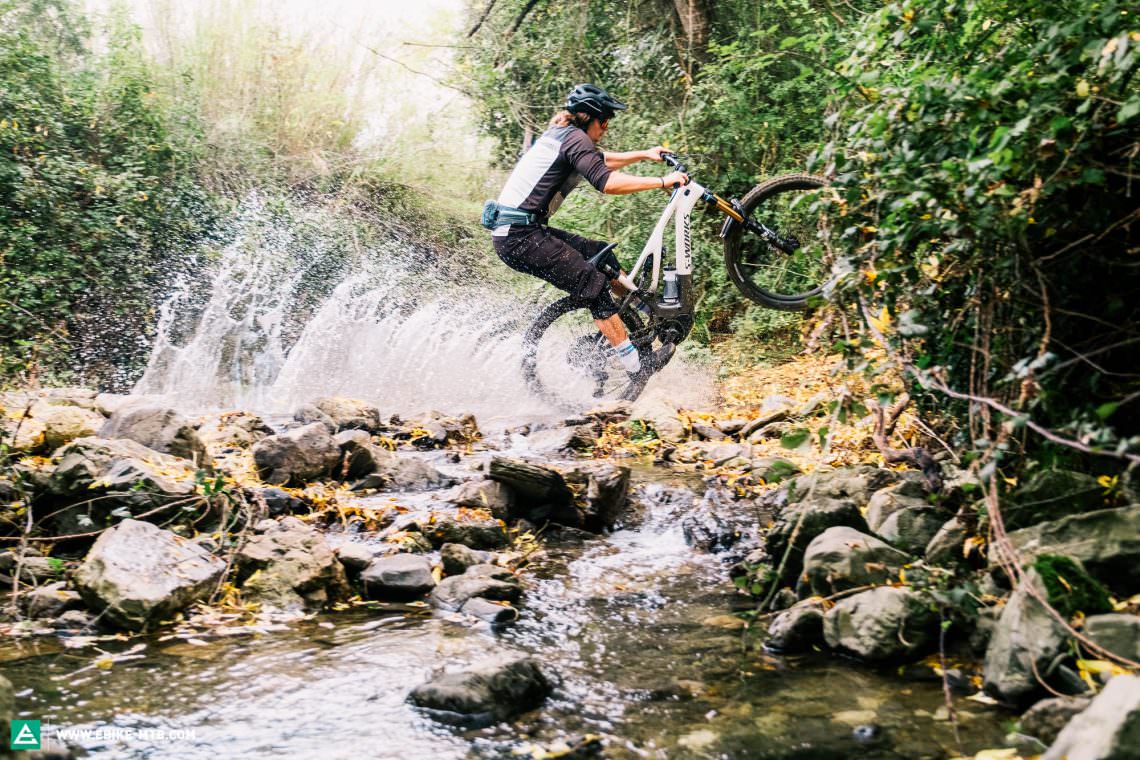
The S-Sizing approach is modern, clever and makes it possible to choose the frame size based on your riding style. However, in our view, the implementation on the Levo isn’t perfect and has its quirks. Specialized wanted to cover a large range of riders between 149 cm and 198 cm tall with the six frame sizes, which we think is brilliant as it will allow almost anyone to find the right Levo for them. However, the new Levo is pretty roomy and the size difference between the S3 and S4 size is fairly large. In other words: we would have liked an in-between size between the middle S sizes.

A further challenge also ensues: you need to know exactly what you want when choosing the right size for you. Our recommendation: take the time to go for a test ride on the trails with potential sizes to figure out which works for you. And if in doubt, take the smaller size – don’t size up!

At 1.87 m tall, I’m at the upper end of the S4 scale and am right in the middle of the S5. However, with a reach of more than 500 mm, the latter would be far too long for me. On the other hand, the S4 hits the sweet spot in the bike park and fast enduro trails. To be honest, on tight and winding trails, I found the S3 a lot of fun too. However, on the uphills, the position ends up a little too compact.

I’m 179 cm tall and, according to the sizing recommendation, at the upper end of the scale for the S3, in the sweet spot for the S4 and could even ride the S5. In practice, both the S3 and S4 suited me well. Playful handling and good character in technical sections at medium speeds are more important to me than high-speed prowess on man-made tracks. That’s why I prefer to ride the S3. The relatively short seated position can easily be compensated with a pushed back saddle.
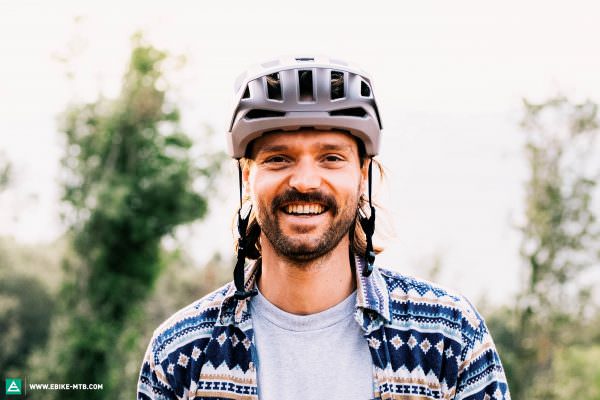
In S4, the Levo becomes a blasting bike and a bit of a steamroller. In S3 it’s significantly more playful and on our home trails around Stuttgart, more fun because you don’t just plough through everything and have to manhandle the bike less.
Exclusive review of the new Specialized S-Works Levo 2022: This is how it rides on the flats and uphill
The first time you get on the Specialized S-Works Levo 2022 in S4, you’ll immediately notice the steep seat tube angle that positions the rider centrally over the motor. On the flats, that puts pressure on the hands and, due to the stiff suspension, the Levo isn’t the most comfortable ride. In principle, the motor and battery capacity are suited for longer tours, but if you ride a lot on the flats you should push the saddle all the way back for a more balanced weight distribution. But the new Levo isn’t really here for long tours on the flats and is designed to shine in technical terrain. There, just like on steep forest roads, you sit just right. The motor is easy to modulate, remains unfazed by varied cadences and is forgiving of incorrect gear choices.
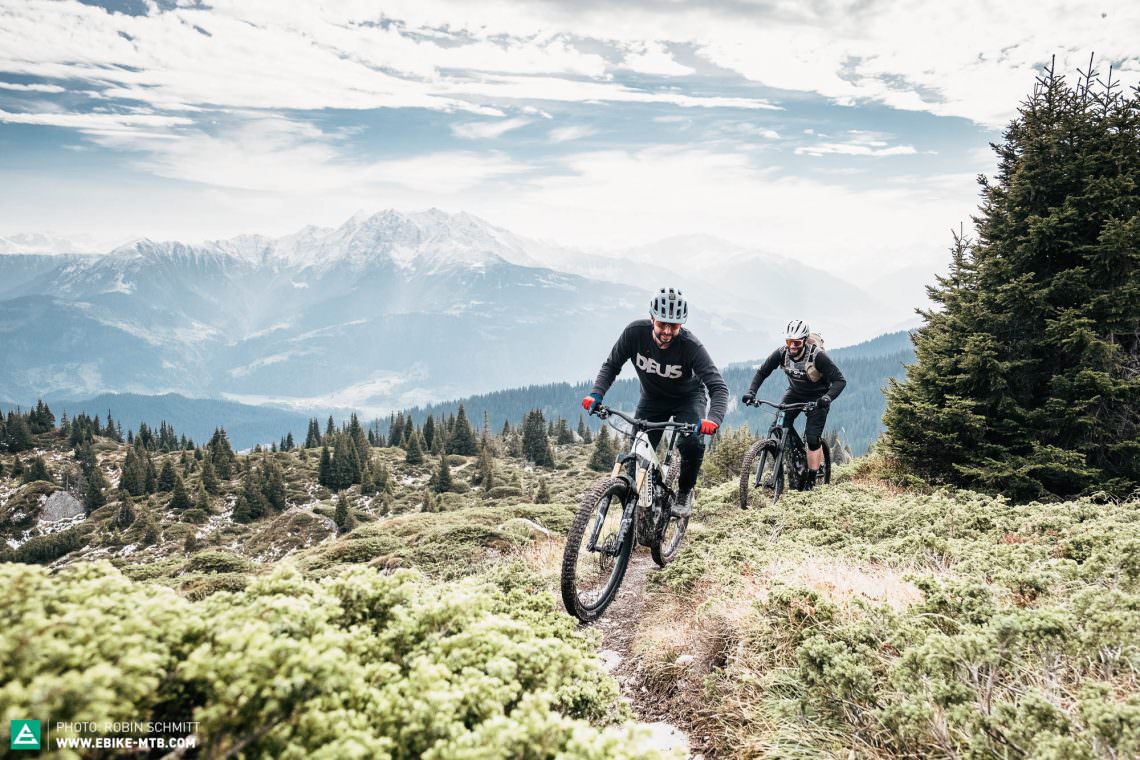


The rear tire might have a relatively low-profile tread but the traction-generating suspension balances that out brilliantly, making technical climbs easy to master. However, even the well-tuned suspension doesn’t manage to completely eliminate occasional spin-outs on loose ground. The Levo manages technical passages masterfully and spurs you on to find new challenges on the way uphill, allowing you to eke out every last bit of enjoyment from technical uphill terrain! If you also enjoy riding uphill flow trails, you’ll have to weight the front wheel actively to ensure that the Levo dutifully follows the line you choose. Otherwise, if the switchbacks are too steep, the front might lift and you’ll just end up heading straight on.
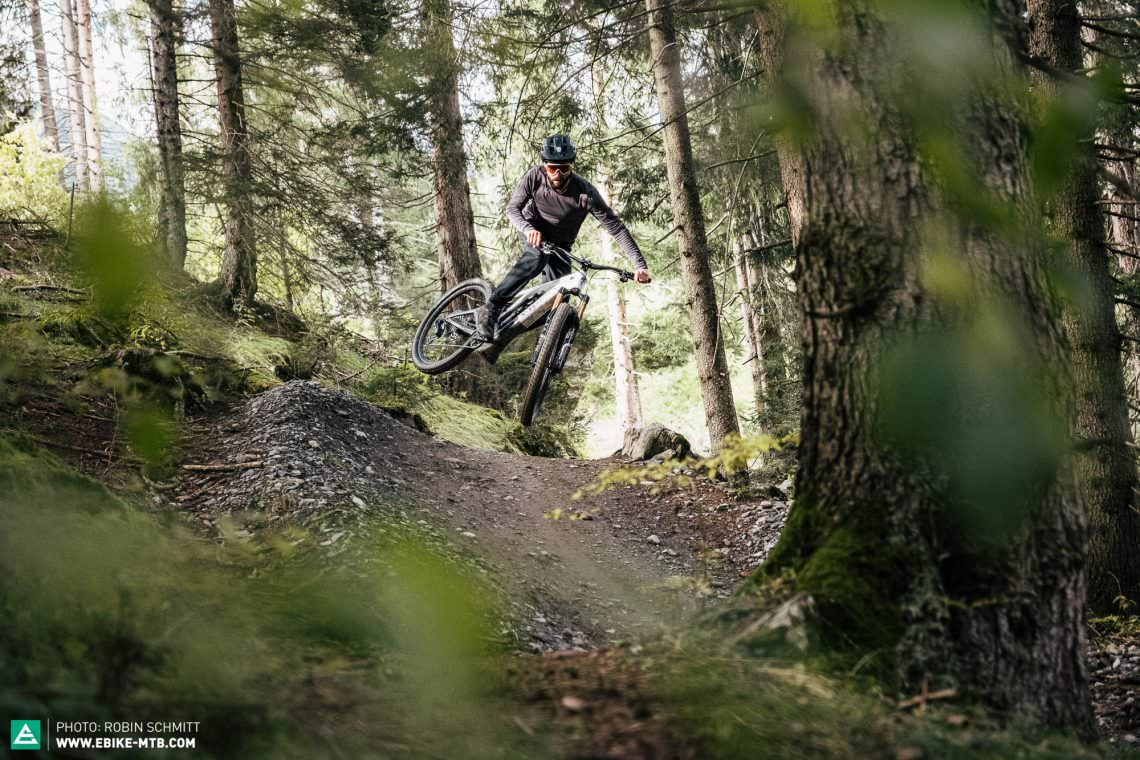
The new Specialized S-Works Levo 2022 downhill
Wireless signal to the AXS dropper and away you go! And that at full speed: the new Levo is a blasting machine that loves high speeds. It combines lots of freedom of movement with a high level of stability and is unsettled by almost nothing. If you prefer to plough through rock gardens and root carpets, the low position of the flip chip (long chainstay setup) might be the better choice. There, the character of the Levo in S4 is more stable and good-natured. Do you prefer to jump over the rocks? Thanks to the low weight and great, supportive suspension, that’s not a problem either! However, then the S4 Levo 2022 will be happier in the high position to better show off its playful character. As a result, the handling might become a little more demanding, with the front needing to be loaded actively in corners and the short rear end dancing around every now and then. Regardless of which setting you’re riding in, as soon as it gets steep and technical, the Specialized S-Work Levo conveys a feeling of security.
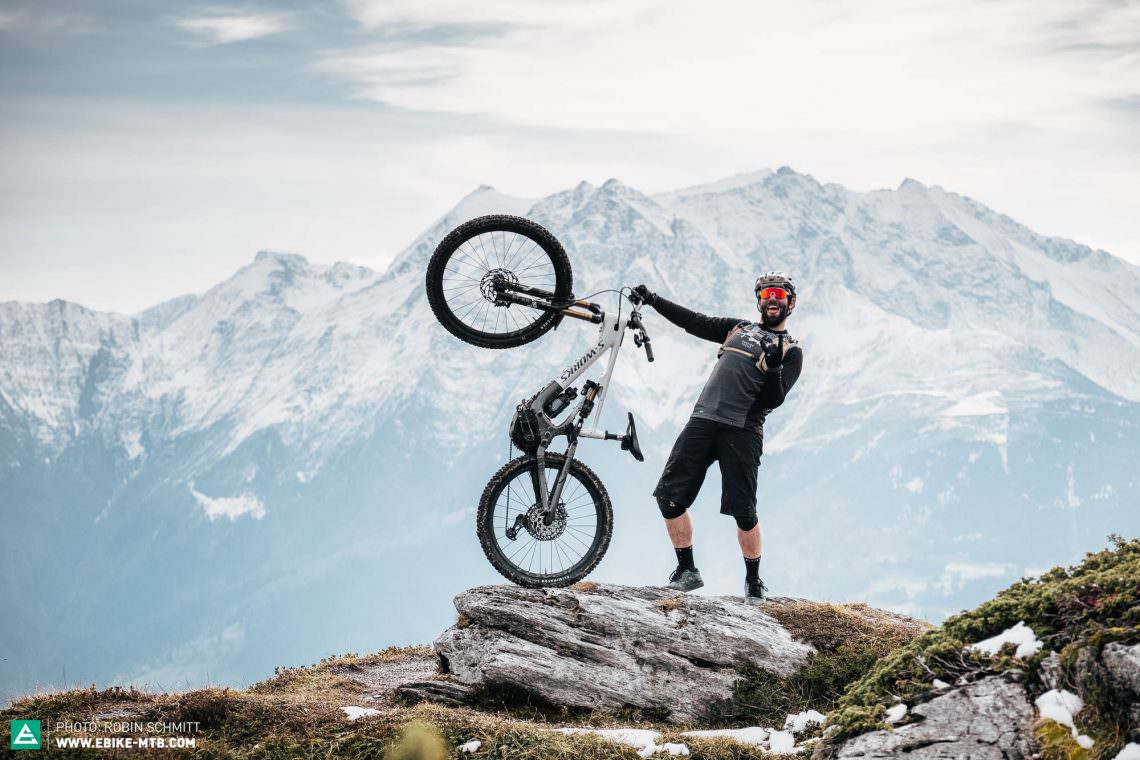
Stable and good-natured or demanding and playful? The flip chip has a massive effect on the handling of the new Levo. But one thing stays the same: the need for speed.

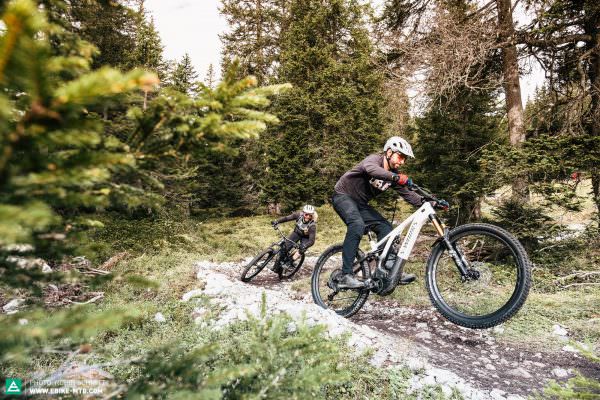
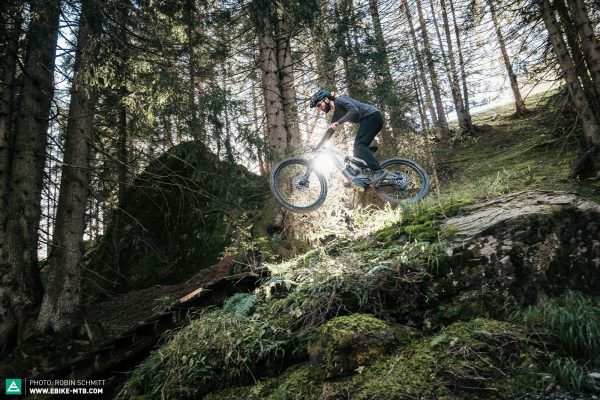
Tuning tips: traditional, separate clamps for brakes and shifting |
more robust tires (e.g. Specialized GRID Gravity casing)
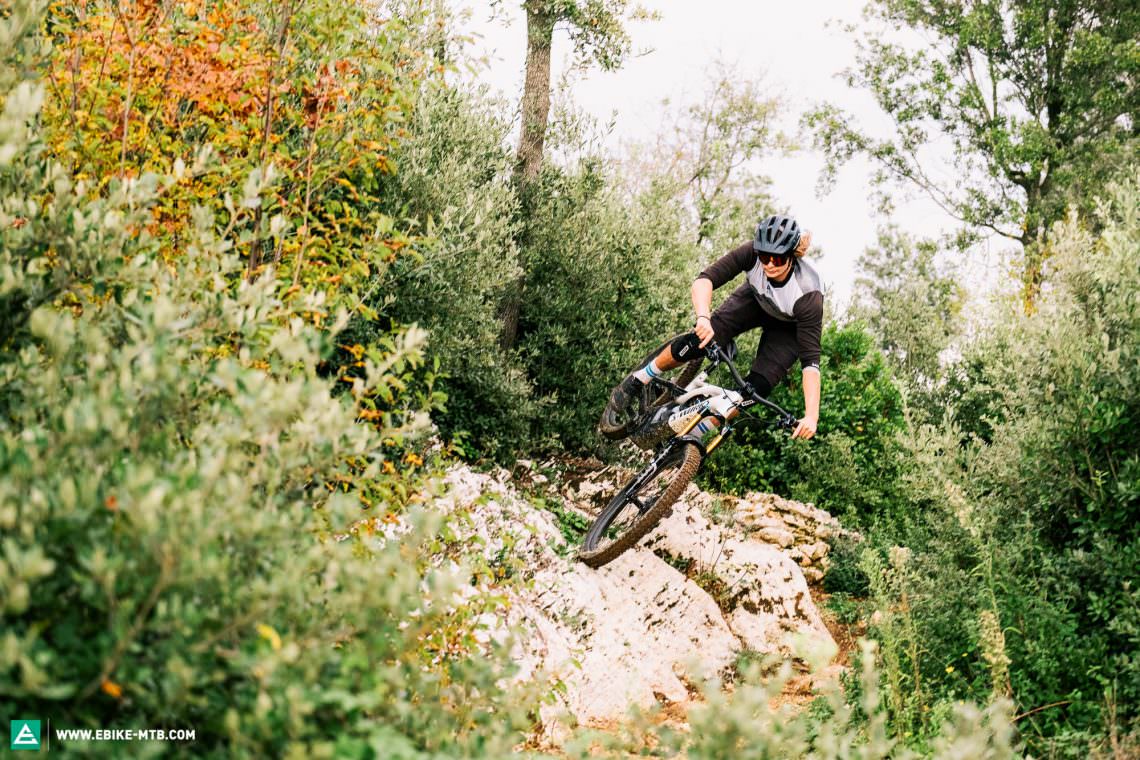
On man-made bike park tracks, the Levo lusts after high speeds and likes to party hard. During fast direction changes, split-second line changes and open corners, it demands an active riding style. The front needs to be actively loaded to generate enough grip on the front wheel. To make full use of the potential of the bike and not have to worry about the consequences of bottoming out tires on the carbon rims, we recommend fitting more robust items, for example with Specialized’s GRID Gravity casings. That wouldn’t just protect the carbon rims but also allow you to run lower pressures in the 2.6″ tires. Of course, on more moderate and flowing trails that isn’t a problem. However, the Levo gets bored here and doesn’t deliver the same enjoyment as it does on high-speed sections.
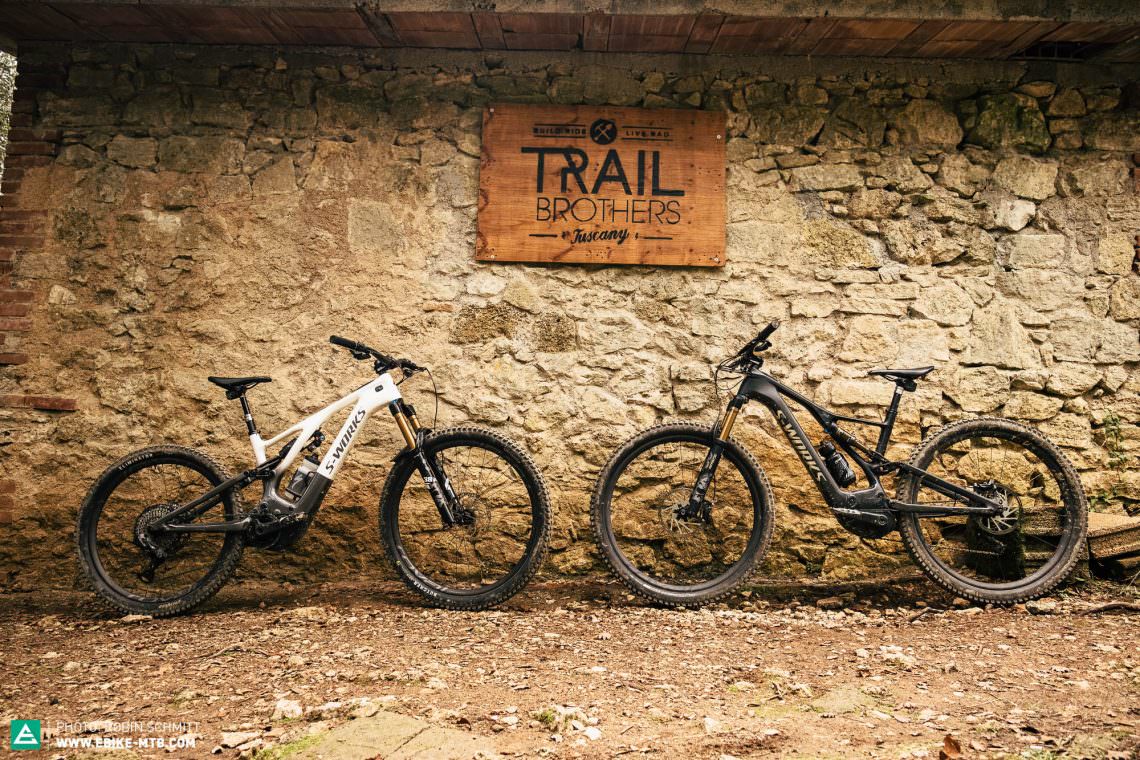
Specialized Turbo Levo S-Works old vs new
Look at the two Levos next to one another and not much seems to have changed. Look closer and you’ll notice that apart from the battery, name and high quality, hardly anything remains the same. The suspension of the Specialized Turbo Levo S-Works 2022 has become significantly more capable, while the 29″ wheels at both ends have given way to an MX setup with a 29″ front and 27.5″ rear wheel.
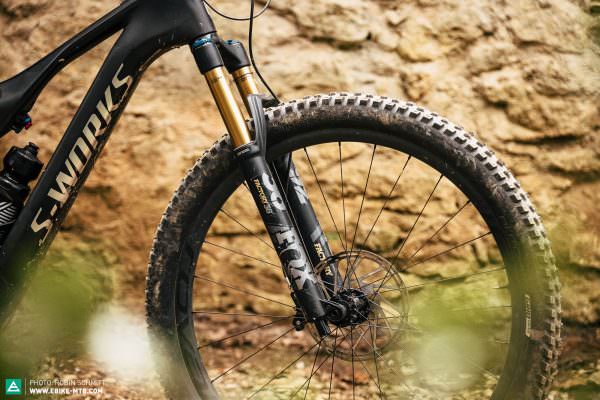

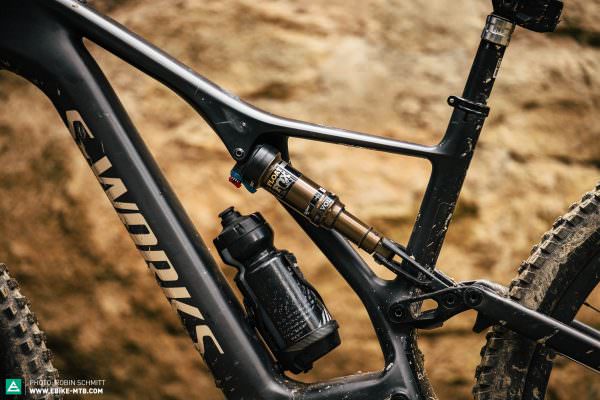
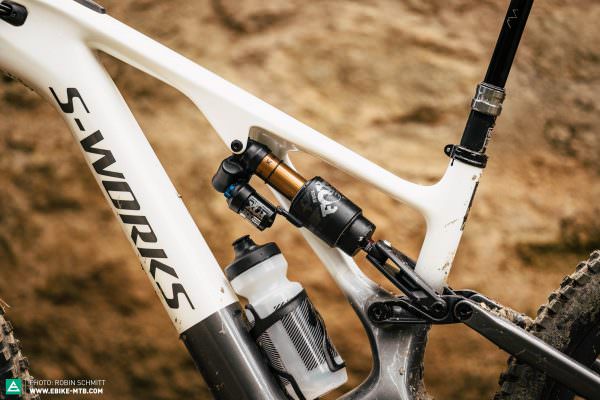

During the redesign, Specialized didn’t just furnish the Turbo Levo 2022 with several cool new and sensible features including the MasterMind with MicroTune, a reworked motor and details like the new waterproof charging port and protection to the rear of the frame. With its numerous adjustment options via a flip chip and angleset, it’s become significantly more complex as well. In addition, the geometry of the new Levo is more capable too. The S-Sizing might give you the option of multiple frame sizes but buying a Levo demands that the customer is clear about their riding style and preferences. The new bike has lost some of the smart simplicity of its predecessor: get on, feel comfortable and have fun straight away isn’t as easy with the new Levo 2022 as it was with the old model due to the new sizing system in combination with the numerous geometry adjustments.
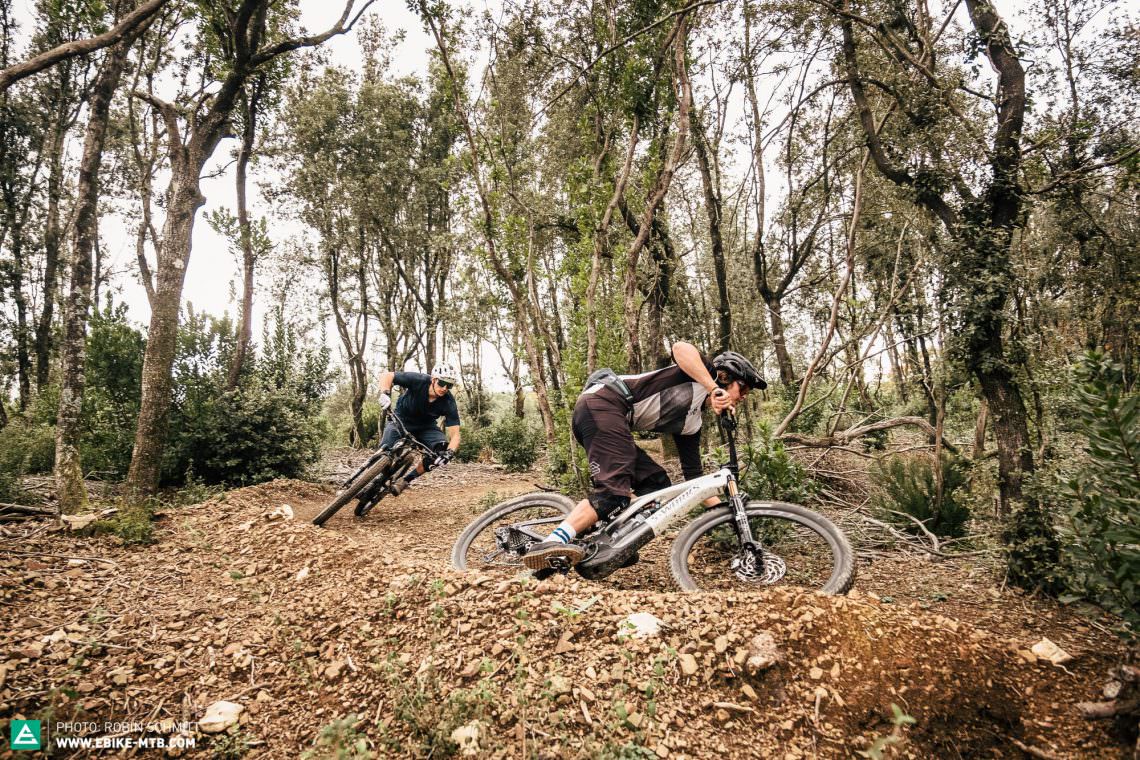
Blasting instead of touring! In comparison to its predecessor, the new Levo has sacrificed all-round characteristics but, as a result, isn’t just more capable in extreme terrain uphill and downhill, but also one of the fastest bikes that we’ve ridden in a long time!
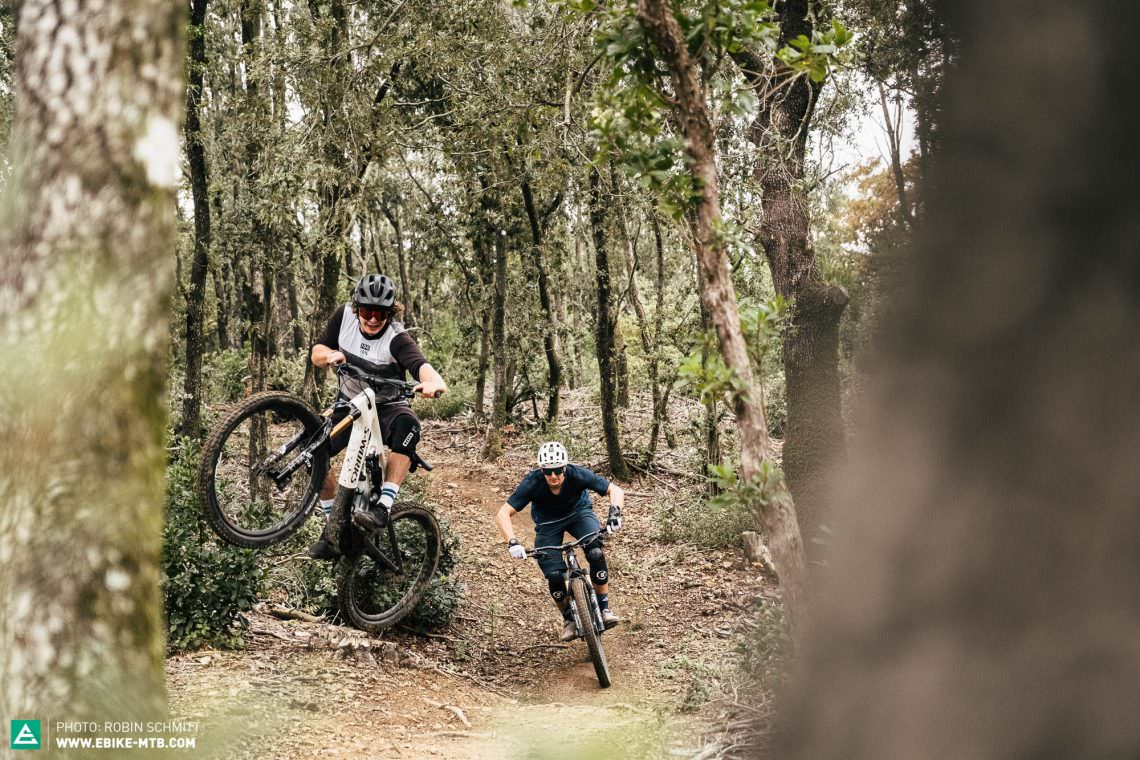
With the new model, the geometry and intended application have become more radical. The “old” Levo is suited to nearly every rider with its light-footed and playful handling and the riding position well-suited to long distances: from beginners to tourers all the way to ambitious eMTBers. It had only two weaknesses in its handling: heading off-road downhill at full speed and the steepest climbs. A further issue was compromises in the spec in favour of lighter weight components, for example, the non-piggyback shock. With the exception of the tire-wheel combination, the new Levo is fully focussed on blasting: on technical terrain uphill and downhill, and at high speeds, it’s made a significant jump in performance. However, it has given up some of the all-round characteristics and long-distance comfort of its predecessor.
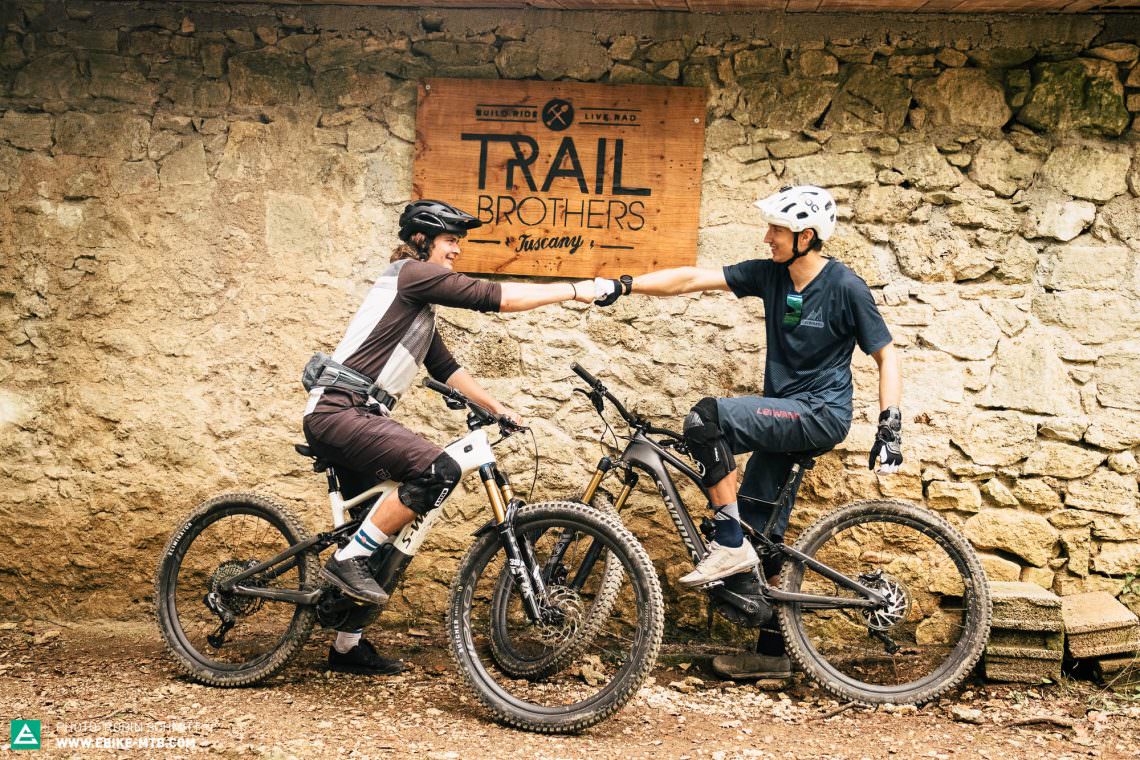
Who should ride the old Levo? Who should buy the new Levo?
Do you want to ride the Levo as an all-rounder and primarily head out on tours or flow trails? On top of that, you’re not travelling at warp speed on technical singletrack? Then you’ll continue to be well served by the old Levo. On the other hand, if you want a high-performance eMTB for fast and rough trails as well as man-made bike park tracks and spend most of your time on technical terrain whether it’s up- or downhill, you should reach for the new Levo.

If you want to find out how the new Levo performed against 24 of the most exciting eMTBs of the year you should download issue #024 in our app magazine. Our digital app isn’t just the best way to enjoy our content but is also packed full of cool stories, know-how and our mega group test with 25 of the most exciting bikes of 2021. You can find out whether the new Specialized S-Works Turbo Levo was able to assert itself over 24 other bikes in the search for the best eMTB of 2021 and continue the successes of its predecessors. The app magazine is completely free and you can find our latest release here.
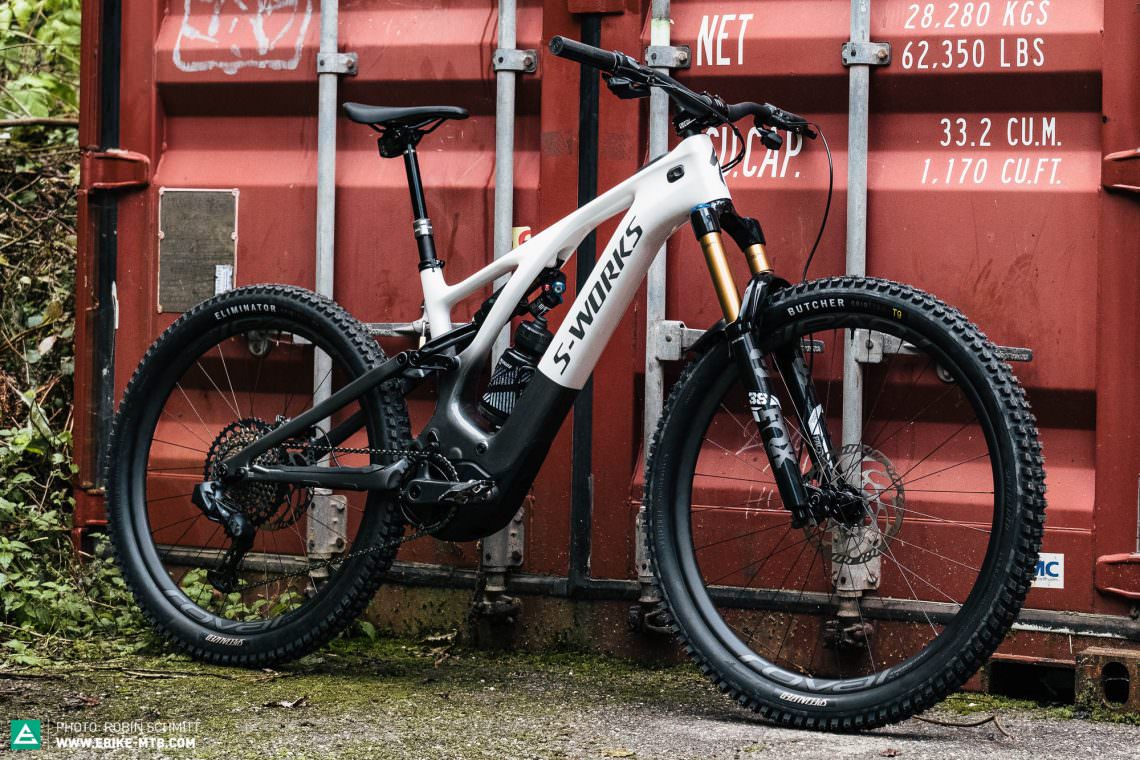
Specialized S-Works Turbo Levo 2022 conclusion
The character of the new Levo has little to do with its predecessor apart from the name and battery. The new Specialized S-Works Turbo Levo is for all those looking for a high-performance eMTB for demanding terrain, with impeccable attention to detail, high finishing quality and state of the art user-experience thanks to an expanded ecosystem around the new MasterMind. It feels happiest on really hard trails and at high speeds, scoring with great suspension and good stability. If you’re looking for a bike for comfortable tours and flow trails, you’re in the wrong place. Even uphill, it is happiest riding demanding terrain. If it sounds like the bike fits you, there’s just one thing: make sure to take the time to find the right size, suspension and geometry setup.
Tops
- performance at high speeds and in technical terrain
- good climbing characteristics
- completely quiet downhill
- numerous improvement to the frame, motor and software
- MasterMind display with numerous connectivity and individualisation options
Flops
- has lost some all-rounder capabilities compared to its predecessor
- finding the right setup and choice of size can be complex
- ergonomics of the cockpit
You can find more information about the Specialized S-Works Turbo Levo at specialized.com.
You can find out how the new Specialized S-Works Turbo Levo performs in our big group test of 25 of the most exciting and promising bikes of 2021 by reading the latest release of our free digital magazine, issue #024. Haven’t used our magazine app yet? You can find out everything you need to know and a download link here.
Did you enjoy this article? If so, we would be stoked if you decide to support us with a monthly contribution. By becoming a supporter of E-MOUNTAINBIKE, you will help secure a sustainable future for high-quality cycling journalism. Click here to learn more.
Words: Jonas Müssig Photos: Robin Schmitt, Jonas Müssig









